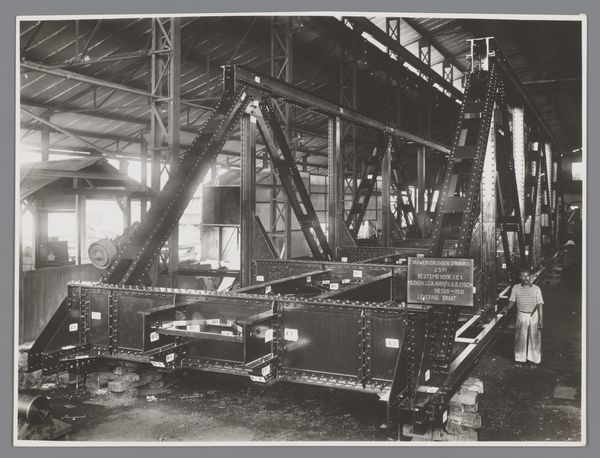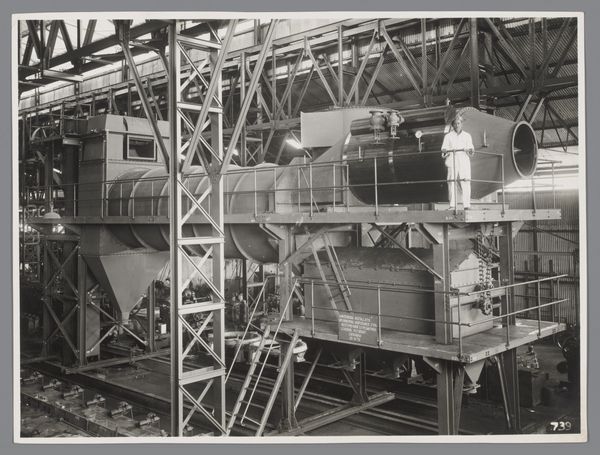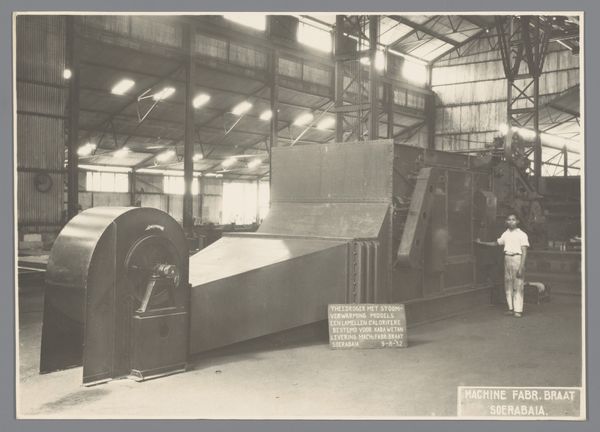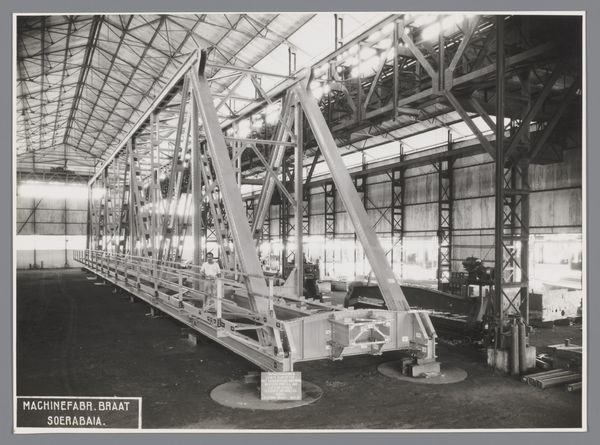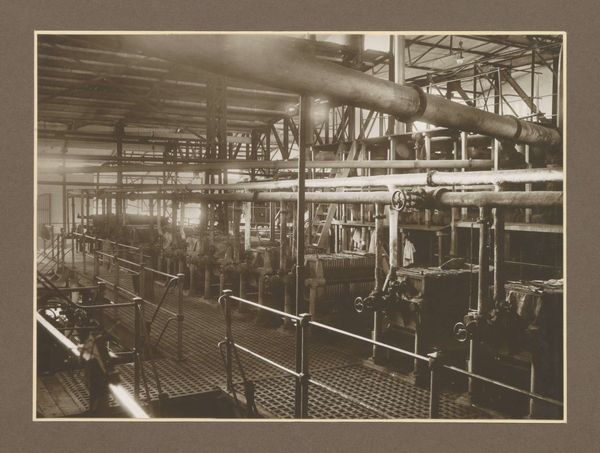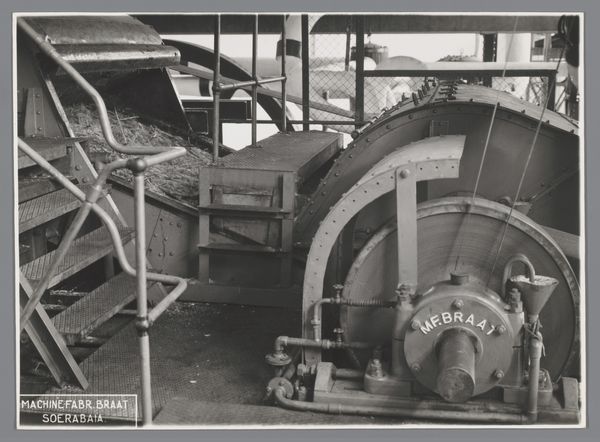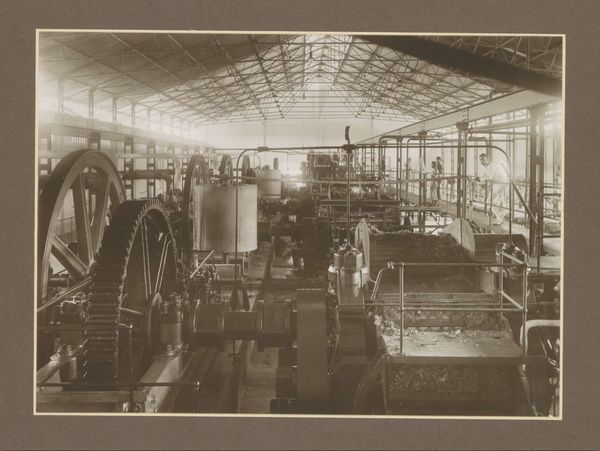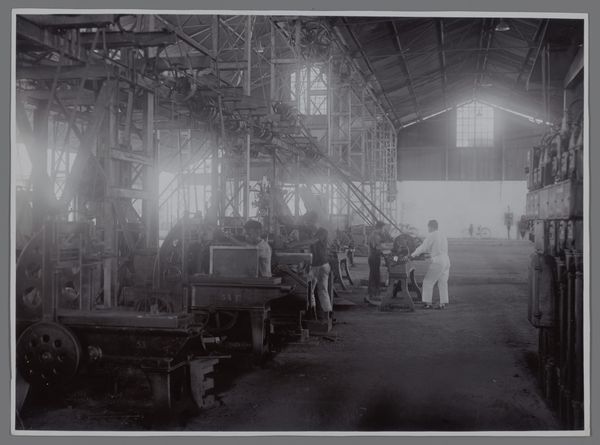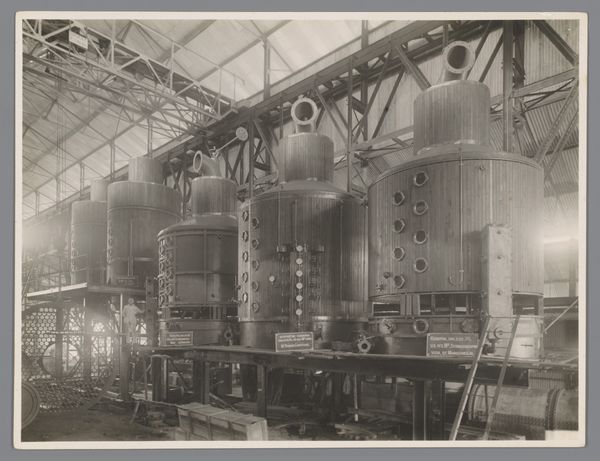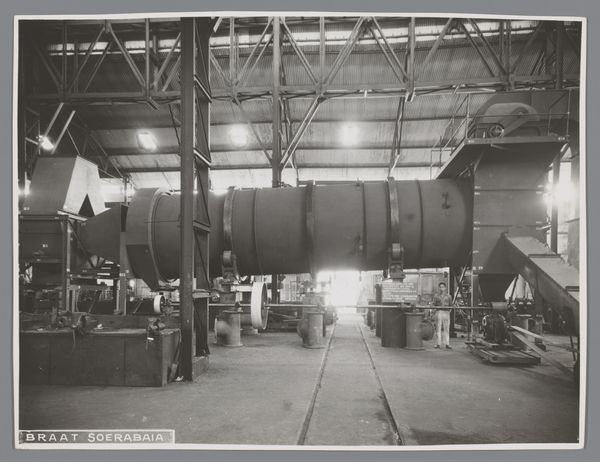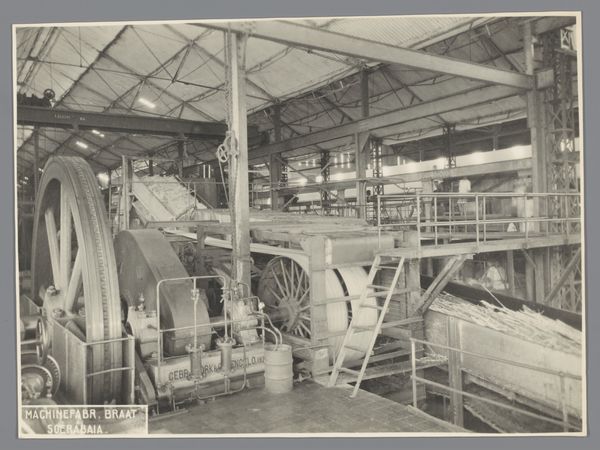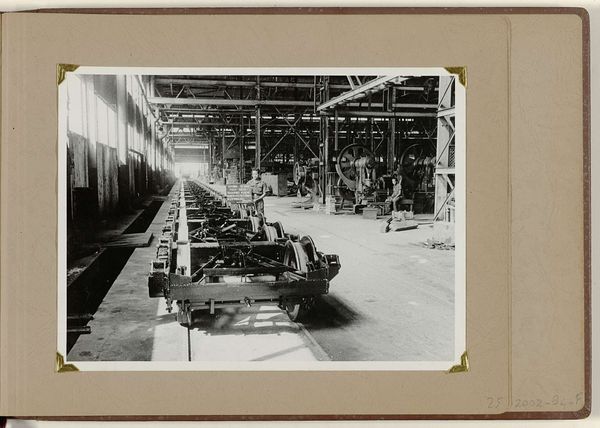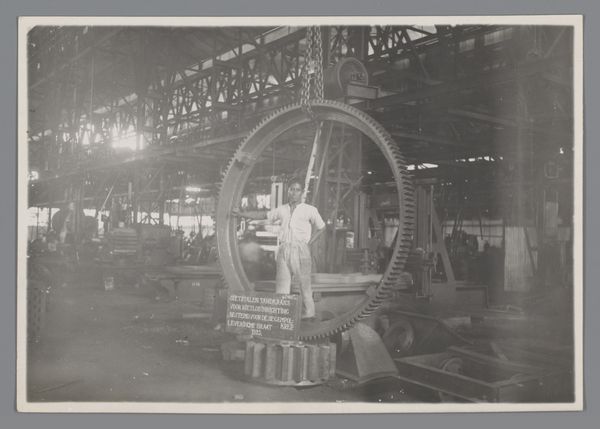
#
aged paper
#
toned paper
#
pencil sketch
#
sculpture
#
old engraving style
#
charcoal drawing
#
unrealistic statue
#
carved into stone
#
pencil art
#
statue
Dimensions: height 169 mm, width 231 mm
Copyright: Rijks Museum: Open Domain
Curator: Looking at this image, I'm immediately struck by its grittiness. The mechanical lines and industrial aesthetic are somewhat unsettling. What do you make of it? Editor: This photograph titled "Bakcarrier" depicts a machine alongside a worker; its date is estimated between 1930 and 1936. It is held in the collection of the Rijksmuseum. The identity of the photographer is unknown, sadly. Curator: Anonymity in the face of such documented technology – how curious. Machines often serve as potent symbols in art and life, wouldn't you agree? The cogs, belts, and relentless movements depicted always evoke this inevitable march forward...but where? And for whom? Editor: I agree! Gears themselves often symbolize the intricate workings of the universe, or even fate in many contexts. The worker’s place alongside the machinery suggests integration, even a merging, of man and machine. His expression seems placid. Is this harmony, or a kind of soulless absorption? Curator: Perhaps it's more about integration into a larger socioeconomic framework. During the interwar period, there was this prevalent hope for technological advancement improving societal infrastructure. Editor: And what about the shadows? They amplify the scale of the machine and simultaneously dwarfs the worker, almost making him disappear. This highlights the shift in power, right? From the individual to the industrial. This imagery echoes the shift from agrarian-centered societies to increasingly manufacturing driven cultures that change personal purpose to focus upon the communal goals. Curator: Yes, certainly. The cultural anxiety from that transition might explain this piece’s appeal today; a constant reflection in present socioeconomic circumstances and fears that echo through time and space. The machine looms with possibilities and potentially, oblivion. Editor: This "Bakcarrier", regardless of the nameless soul who captured the image, serves as an uncomfortable visual emblem and a potent reminder of past industrial shifts. It certainly makes one question today's technological narratives, doesn't it? Curator: It does indeed. These industrial advancements and anxieties remain, shaped by contemporary political rhetoric. So thank you to whomever took this photograph and made us think even just a little.
Comments
No comments
Be the first to comment and join the conversation on the ultimate creative platform.
